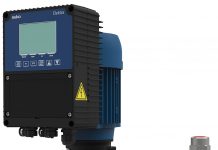The water industry is one of the biggest users of energy in the world. The UK water sector, a service industry, is among the top 5 energy consumers in the country, alongside transportation and commercial users. Water treatment plants, pumping stations, and distribution networks all require a significant amount of power to operate – 3% of UK’s consumption goes into powering this key infrastructure.
Historically, water utilities were passive consumers of the prices and rate structures set by energy suppliers. But in recent years, the water sector has been leading the charge towards a greener, more cost-efficient, and sustainable energy landscape.
The Power of Synergy
The water sector’s energy reliance goes beyond usage. It’s a symbiotic relationship offering water utilities the potential of energy storage and power generation, underscoring effective and cost-effective energy management. Smart grids and renewables give water utilities greater control over their energy usage. By adjusting water movement based on demand and energy costs, they can pump water during low-cost-energy periods and utilise gravity for pressure from elevated tanks. This is crucial as 95% of utility expenditures in clean water are attributed to pumping.
As large landowners with vast capabilities to harness wind and solar energy, as well as generating their own energy from in-line hydro and from biogas production, water utilities are at the forefront of sustainable energy solutions.
Mastering the Energy Maze
Yet, amid this vast potential lies a maze of challenges and complexities that utilities must navigate. With many suppliers and tariffs, it can be difficult to decide when and how to buy energy and how to manage costs in the face of unpredictable energy pricing. Energy prices can also fluctuate significantly, as evidenced during the Ukraine conflict, making it hard to plan for the future.
Water utilities can use real-time data, advanced software, and both conventional and renewable energy to optimise energy usage and reduce costs. By tracking consumption and identifying energy-saving opportunities in real-time, utilities become masters of their own energy use, cutting costs and their carbon footprint.
Three years into the PR19 Ofwat Price Review, UK utilities are fulfilling carbon reduction commitments. Thames Water pledged £2.1 billion extra for climate resilience and green energy, enough to power 115,000 homes in a year. South West Water targets carbon reduction of 100,000 tonnes, enhancing energy efficiency, including pump optimisation, and improved waste and water treatment processes.
Real-time Optimisation: The Key to Energy Management
Real-time optimisation is the future of energy management for water utilities, enabling them to track usage and make adjustments in real time, using data like energy prices, water demand, and renewable energy availability. Within minutes, the control room can have a brand new, optimised plan.
Real-time optimisation helps water utilities respond to energy market fluctuations without compromising water quality and availability. For example, upon receiving a short-term (usually 2 hours or less) Demand Response request from the energy company, utilities can pause pumps, reaping substantial benefits. Similarly, when sunlight or wind intensifies, operational tweaks can harness renewable energy sources effectively.
This function also helps optimise operations based on predicted price, available electricity, water demand, and storage capacity, allowing for efficient use of energy resources and stop overspending.
AQUADVANCED® Energy: Leading the Way in Real-Time Optimisation
AQUADVANCED® Energy by SUEZ is a leading provider of real-time software for water and wastewater utilities, driving sustainable operational and energy optimisation. It auto-manages network assets, including pumps, aiming for the lowest energy cost. It monitors renewable energy assets and can adapt in real-time to changing availability and cost, freeing up operators for other tasks. Using a Digital Twin, it confirms future schedules will meet all operational objectives and achieves best energy efficiency. This cuts energy consumption and costs by 6%-8% and 12%-20%, respectively, leading to a 6%-10% lower emissions, supporting UK utilities’ commitments.
It is integrated with the water utilities’ SCADA and optionally with the energy billing systems. The software also provides utilities with insights into the performance of their renewable energy assets, improving asset efficiency and reducing the environmental impact by utilising green power when available.
AQUADVANCED® Energy customers Anglian Water and Affinity Water both lauded the software’s capacity to “maximise renewable energy for carbon reduction” and SUEZ’s position “as a top-tier optimised solution supplier”.
With these innovative digital solutions at their disposal, water utilities can lead the way in maximising the impact of each drop of water and every watt of energy, contributing to a cleaner and better world.
suez.com/uk
Ashley Slade is Digital Business Development Manager for SUEZ with over 14 years of commercial expertise across highly regulated industries. He leads the strategy for driving business growth for the innovative AQUADVANCED® suite of smart solutions designed for the water and wastewater sectors.








